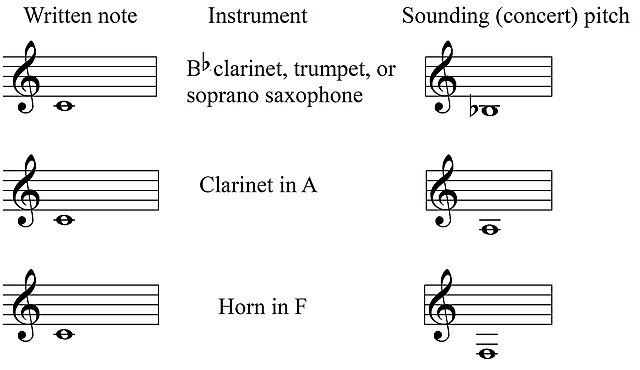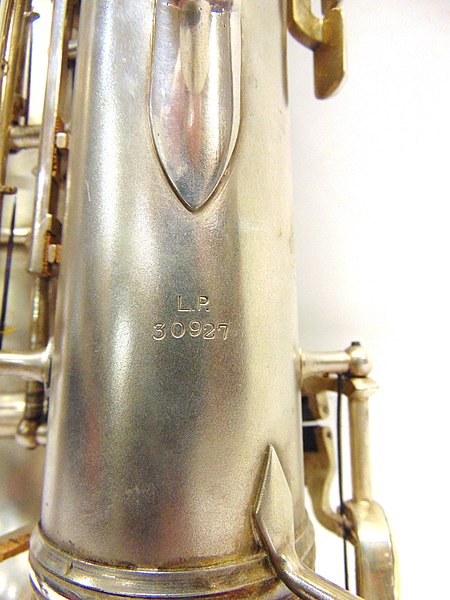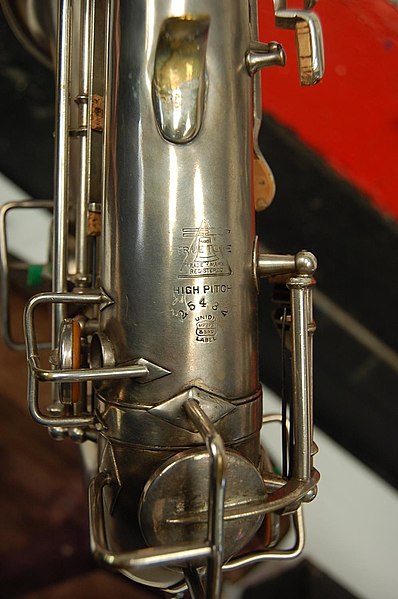A transposing instrument is a musical instrument for which music notation is not written at concert pitch. For example, playing a written middle C on a transposing instrument produces a pitch other than middle C; that sounding pitch identifies the interval of transposition when describing the instrument. Playing a written C on clarinet or soprano saxophone produces a concert B♭, so these are referred to as B♭ instruments. Providing transposed music for these instruments is a convention of musical notation. The instruments do not transpose the music; rather, their music is written at a transposed pitch. Where chords are indicated for improvisation they are also written in the appropriate transposed form.

Sheet music of the full score for Max Reger's Der 100. Psalm for choir, orchestra and organ. Staves for voices and for most concert-pitch instruments show a key signature of D major. Clarinets (2 Klarinetten in A) are shown with the appropriate transposition. French horns (4 Hörner in F) are shown transposed, but without a key signature, while trumpets (2 Trompeten in C) and timpani (3 Pauken in A C D) are written at concert pitch without key signatures.
Image: Transposing examples
Concert pitch is the pitch reference to which a group of musical instruments are tuned for a performance. Concert pitch may vary from ensemble to ensemble, and has varied widely over time. The ISO defines international standard pitch as A440, setting 440 Hz as the frequency of the A above middle C. Frequencies of other notes are defined relative to this pitch.
A circa 1932 Boosey & Hawkes 'Model 32' alto saxophone stamped 'LP' for Low Pitch (A=440 Hz)
A 1915 Buescher Truetone alto saxophone marked 'High Pitch' (A=456 Hertz)
A 1927 Conn New Wonder Series 2 alto saxophone marked 'H' for 'High Pitch' (A=456 Hertz). Saxophones tuned to A=440 Hz would be marked 'L', 'LP' or 'Low Pitch'





